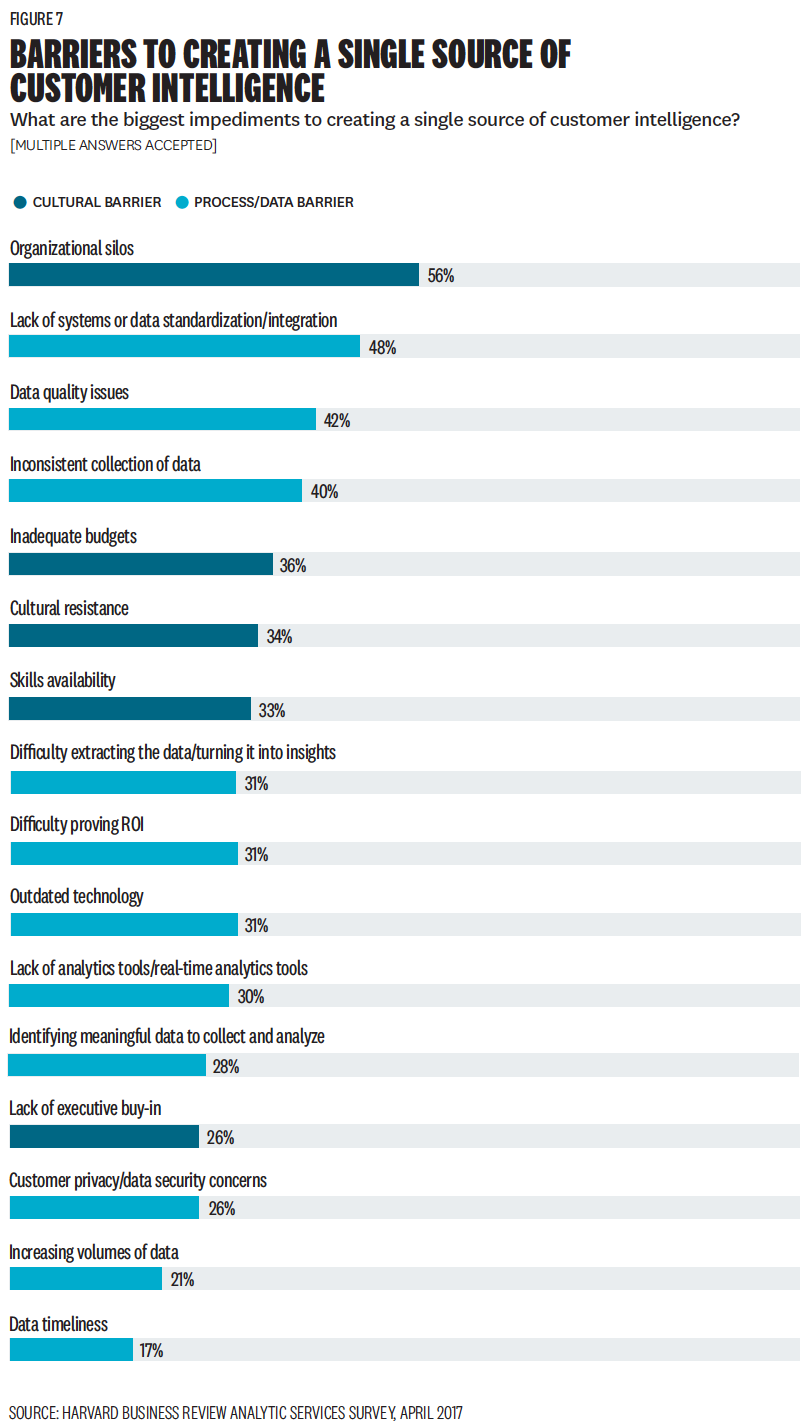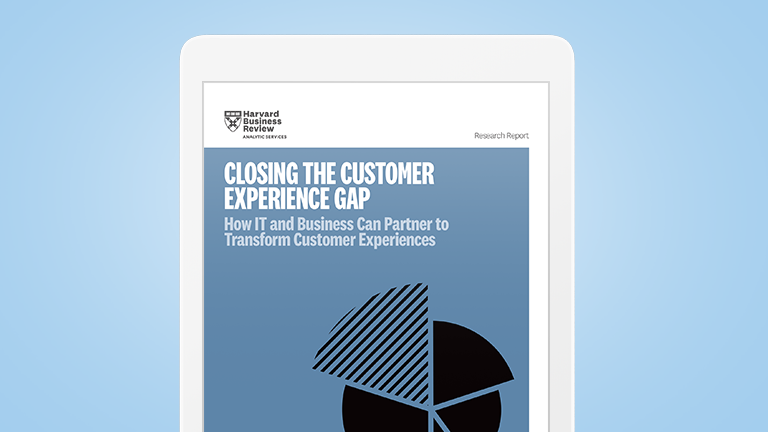Closing the Customer Experience Gap


Analytic Services Research Report, Sponsored by Salesforce
Chapter 2: A Single Source of Truth Remains Elusive

Leaders are more likely to have achieved a single customer intelligence source. However, three quarters of them admit that they are not yet where they would like to be.
The performance marketing manager at an online fashion retailer said data and systems integration has made creating a single source of customer truth a challenge, although it is something they are actively developing.
At the terminal technology provider, consolidation of systems with its parent company and also with a newly acquired company has to date thwarted such efforts. “It’s an ongoing process to rationalize and clean up the data across systems as we continually evolve,” said the company’s vice president of customer experience. Ultimately he would like to begin correlating CRM and financial data to start looking at customers in new ways—in terms of profitability and demand for support services—but that will take another year or two.
There are a number of impediments to these efforts, led by organizational silos, lack of systems or data standardization and integration, data quality issues, and inconsistent collection of data.
Eliminating silos has been critical to customer experience innovation at the global financial services company, where employees have reorganized around the customer journey. “We are able to see and manage the end-to-end customer processes better and take on more responsibility to improve them,” says the customer experience leader. “Before, it was difficult to even realize the smallest changes to the customer experience. Now it’s much easier and faster to do.” The company is redesigning and streamlining customer journeys and also developing a tool kit that other employees can use to gather insights to make further improvements to customer experiences.
Inadequate budgets, cultural resistance, and lack of availability of skills are also significant barriers to creating a single view of the customer for a third of respondents. “The proliferation of new technologies means that it’s becoming harder and harder to access expertise in these platforms, and there is often significant competition in the market for staff and even vendor resources to assist,” says the CCO of the institutional investment and benefits provider. “Forming partnerships with vendors and consultants has been our initial strategy to deal with the skills shortage, with a strategy to grow more internal talent over time.”

Creating a Platform for Customer Experience Innovation
As important as breaking down organizational barriers and acquiring the requisite skills for customer data gathering and analysis is putting in place a technology foundation that’s capable of delivering a single source of customer truth. Even companies that are committed to customer experience improvement and innovation struggle to integrate data in legacy systems with new sources of customer data in a streamlined and meaningful way.
Leading companies have invested in databases and data warehouses that can ingest both internal and external sources of data across applications and channels, but many have found that alone does not solve the problem.
“It’s a struggle. We’ve got more data than we can handle coming in from different systems and sources, ” said the CEO of a credit union, which uses a data warehouse to pull in data from various internal and third-party sources. “Just because you pour it all into the same container doesn’t mean you can draw connections between disparate data. There’s more than enough information, but getting it all to mean something—and then doing something with it that’s valuable to customers—is the real challenge.”
Similarly, the global financial services company houses all of its own customer related data in a centralized data warehouse but has not yet been able to easily integrate behavioral data from websites or social media. “We have to go to several systems to get the whole picture, and that can be tiresome,” said the bank’s customer experience leader. “In the future, we’d like to have all that information in one place where we can easily access it and cross-reference data in various streams.”
The most important sources of customer experience data are customer relationship management systems (75%), customer satisfaction surveys (53%), social media tools (43%), feedback from sales and retail staff (40%), email or SMS (37%), and transaction data (34%). The sources of data that are actually used for customer experience are CRM (54%), customer satisfaction surveys (52%), websites (50%), contact center managers (41%), and feedback from sales and retail staff (31%). Very few companies are yet using data coming in newer sources such as mobile apps, internet-connected devices, or wearables.

However, being able to ingest and analyze such new sources of customer insight and use that to inform and update a single source of customer intelligence will be a key competitive differentiator going forward. Ingesting new sources outside enterprise systems “is vitally important,” says the credit union CEO. “We need to use those small seeds of information that may be easily overlooked. The key is to have a very flexible system that can ingest a variety of data in many forms. It’s difficult to require normalized data from each source.”
Legacy CRM systems—particularly proprietary or highly customized ones— are seldom a fit for such purpose. The institutional investment and benefits provider threw out its proprietary CRM platform, replacing it with a software as-a-service option that, in conjunction with a marketing automation system, serves as the company’s technology hub of customer insight. All other applications and sources of data exist as spokes feeding into that central source of customer intelligence. “Over the years, large organizations build up overlapping technologies, and, very often, the customer comes last. You have to strip away those layers so that the customer record has primacy. I’m not sure anyone can get there by adding new platforms into legacy systems structures.” Figuring out how best to stitch together these expanding sources of customer data is itself becoming a competitive advantage, says the CCO. “Our CRM and marketing automation platforms are the only systems connected to our data warehouses and insights platforms, and they are then used to deliver any type of data or insight to any other platform within the ecosystem seamlessly on an as-needed basis. This approach offers a lot of flexibility, simplicity, and efficiency as we deal with ever increasing data sources and insights.”
The key is having “a data-rich, aggregated dashboard that remains consistent yet open to new forms of data—the customer insight visualization platform,” says the vice president of IT at the software solutions provider for logistics terminal operators. The technology powering the dashboard must be capable of elegantly weaving together disparate data sources, he says. “Success requires an ongoing process of finding and integrating new technologies into a data platform.”
The Age of the Customer-Centric CIO
overview
Chapter 1
Chapter 2
Chapter 3
Chapter 4
Want to read the full report?
Questions? We’ll put you on the right path.


